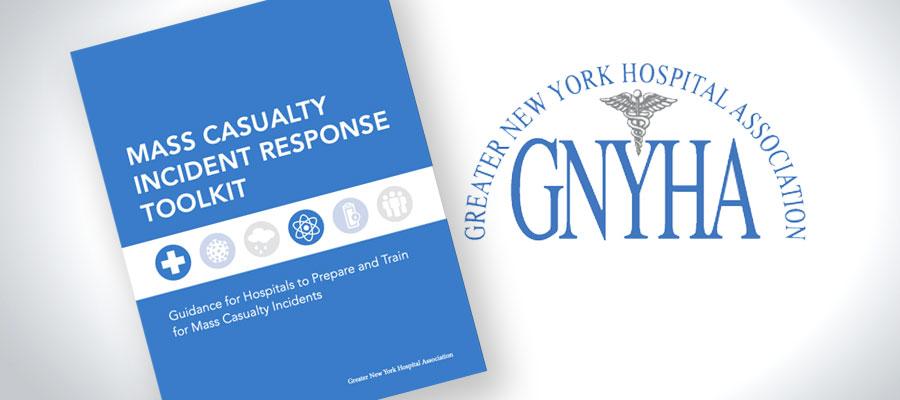New toolkit helps hospitals prepare for mass casualty incidents

The Greater New York Hospital Association (GNYHA) recently released a Mass Casualty Incident Response Toolkit to help its member hospitals and health systems develop and improve their mass casualty incident response plans.
In the New York region, mass casualty incidents (MCIs) occur frequently, with most producing only a few patients. However, MCIs that result in large numbers of patients, including critical patients with life-threatening injuries, can quickly overwhelm area hospitals. Hospitals must be prepared to effectively and efficiently respond to such incidents while continuing to meet the needs of other patients.
GNYHA’s toolkit includes suggested preparedness and response actions for the many clinical and non-clinical departments that participate in an MCI response, and related training, drills and exercises. While patient care is the priority, the toolkit emphasizes the importance of planning and developing protocols and processes for additional activities, including patient registration and tracking, family reunification and coordination with external entities. If these non-patient-care activities are not thought through in advance, their impact can overwhelm a facility and compromise its ability to deliver lifesaving care. While the toolkit refers to several New York City or region-specific protocols and resources, GNYHA believes the content will be valuable to hospitals throughout the United States.
Much of the toolkit’s content and organization stems from collaborative planning efforts that GNYHA has led or been involved in over the last several years, resulting in the development of new communication protocols and structures and targeted training and programming. The toolkit also includes emerging best practices from intentional attacks that have occurred nationally and internationally.
The toolkit can be used in many ways to advance internal MCI response planning, including:
- Discussing the contents of the toolkit at an Emergency Management Committee meeting
- Reviewing the toolkit to identify and address existing gaps in internal plans
- Using sections of the toolkit to inform planning meetings with key clinical and non-clinical departments
- Adapting response aids in Appendix A for use within your facility
- Modifying scenarios in Appendix L to develop unit-based and facility-based exercises
For questions about the Mass Casualty Incident Response Toolkit and related initiatives, please contact Jenna Mandel-Ricci, vice president, Professional and Regulatory Affairs at GNYHA, at 212-258-5314 or jmandel-ricci@gnyha.org.

